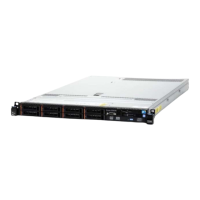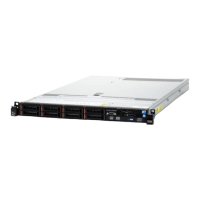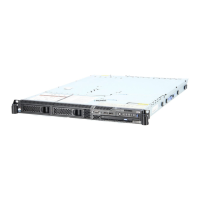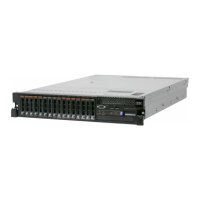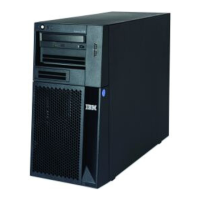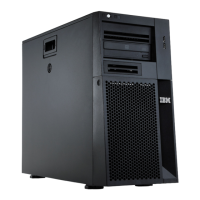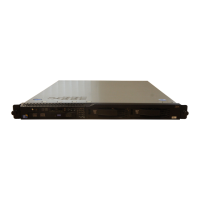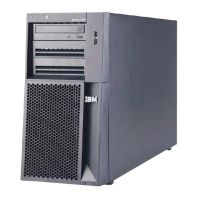Table 9. Maximum memory installation using ranked DIMMs (continued)
Number of DIMMs DIMM type DIMM size Total memory
18 Dual-rank RDIMMs 16 GB 288 GB
v The RDIMM options that are available for the server are 2 GB, 4 GB, 8 GB, and
16 GB. The server supports a minimum of 2 GB and a maximum of 288 GB of
system memory using RDIMMs.
For 32-bit operating systems only: Some memory is reserved for various system
resources and is unavailable to the operating system. The amount of memory
that is reserved for system resources depends on the operating system, the
configuration of the server, and the configured PCI devices.
v The UDIMM options that are available for the server are 2 GB and 4 GB. The
server supports a minimum of 2 GB and a maximum of 48 GB of system
memory using UDIMMs.
Note: The amount of usable memory is reduced depending on the system
configuration. A certain amount of memory must be reserved for system
resources. To view the total amount of installed memory and the amount of
configured memory, run the Setup utility. For additional information, see
Chapter 3, “Configuring the server,” on page 111.
v A minimum of one DIMM must be installed for each microprocessor. For
example, you must install a minimum of two DIMMs if the server has two
microprocessors installed. However, to improve system performance, install a
minimum of three DIMMs for each microprocessor.
v DIMMs in the same channel must be the same type (RDIMM or UDIMM) to
ensure that the server will operate correctly.
v When you install one quad-rank RDIMM in a channel, install it in the DIMM
connector furthest away from the microprocessor.
v Do not install one quad-rank RDIMM in one channel and three RDIMMs in
another channel.
The following illustration shows the location of the DIMM connectors on the
system board.
56 IBM System x3550 M3 Type 4254 and 7944: Installation and User's Guide
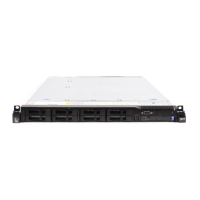
